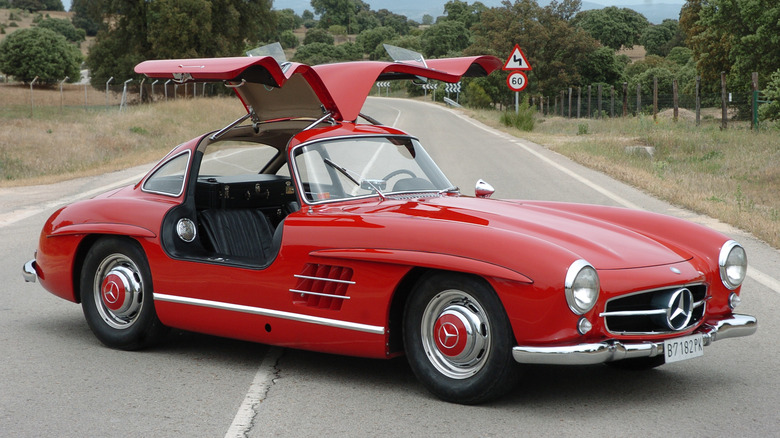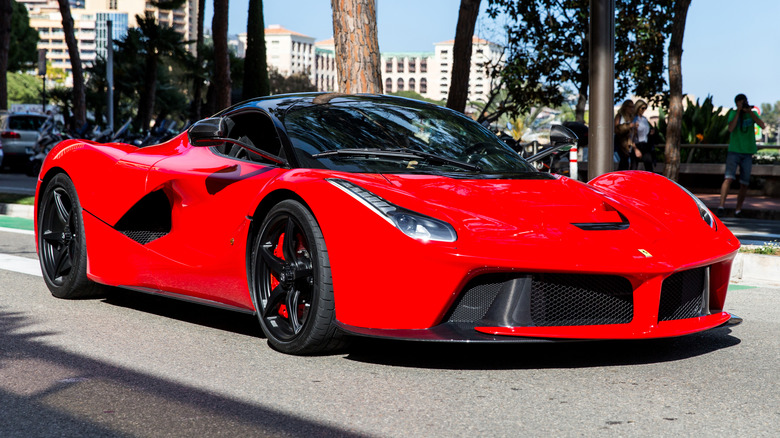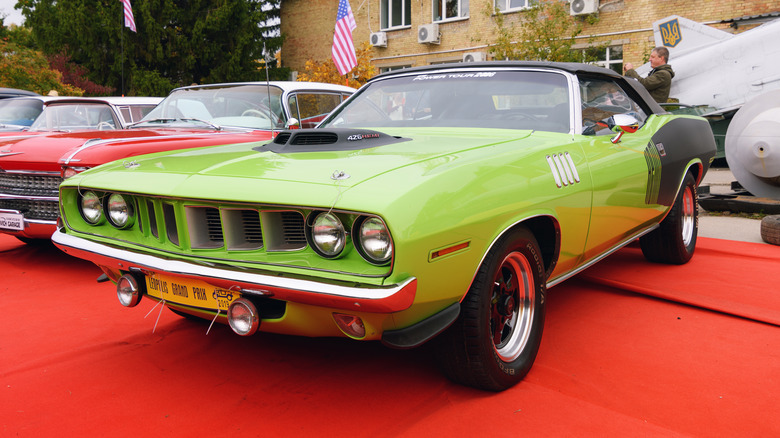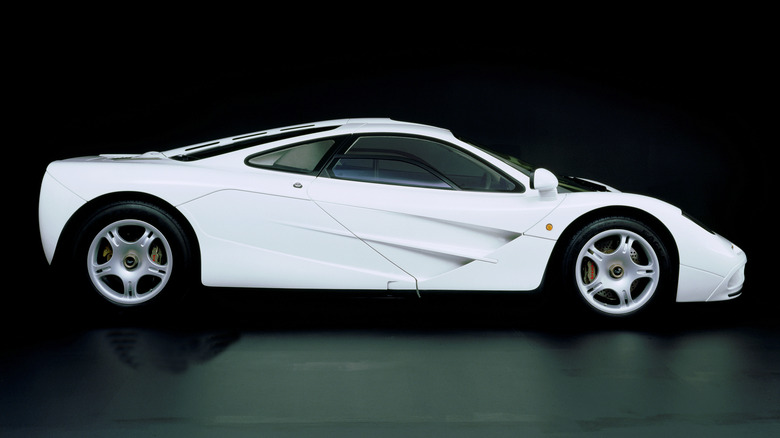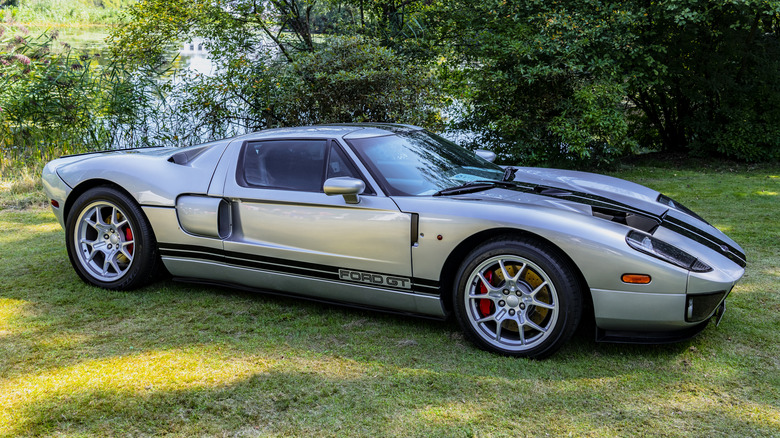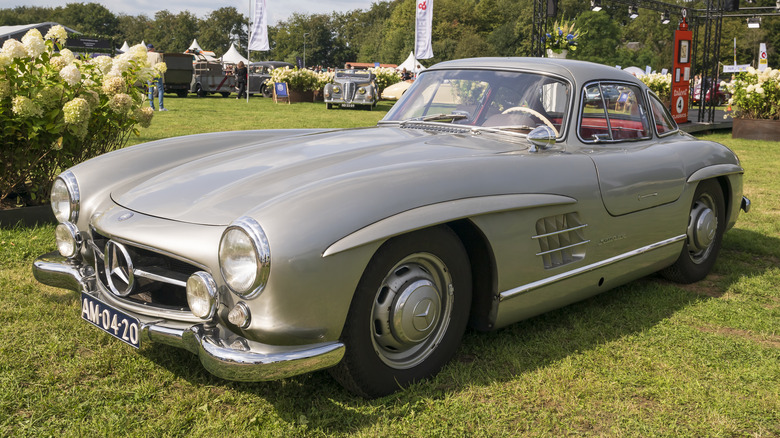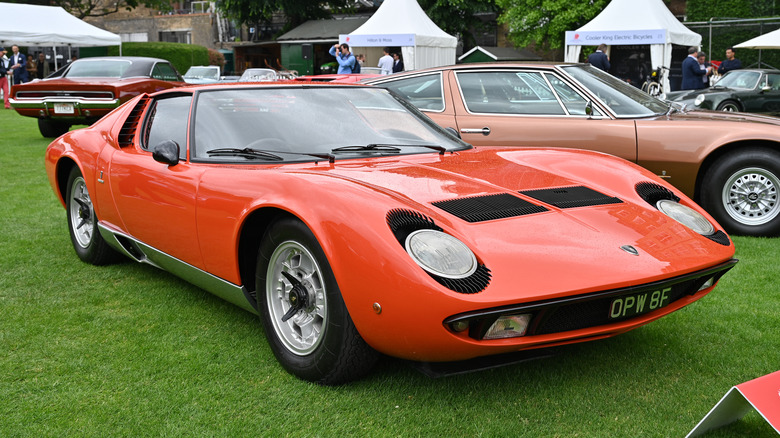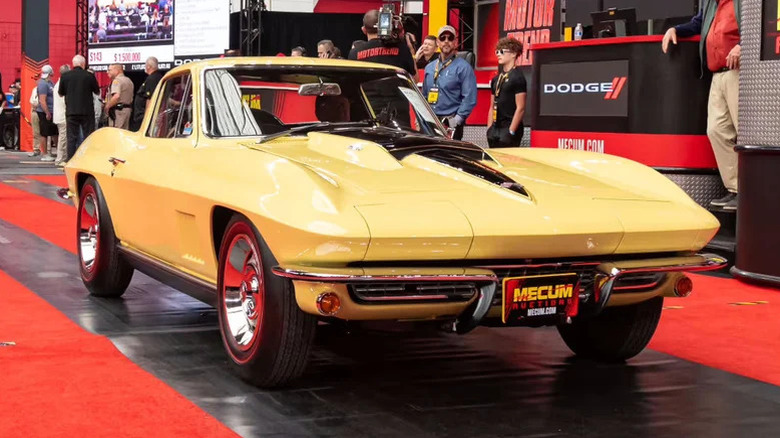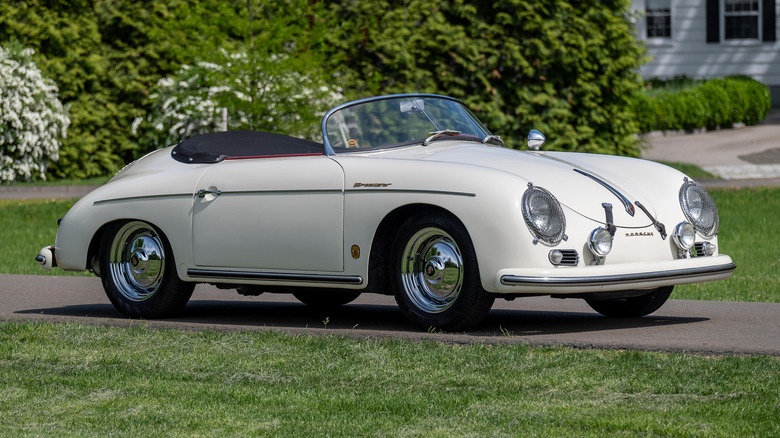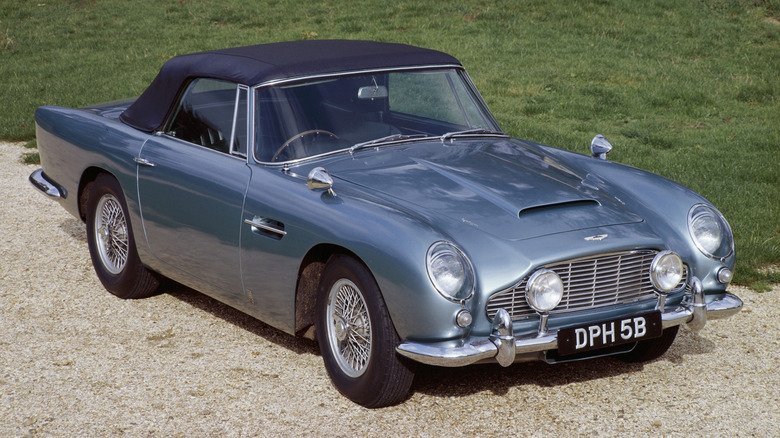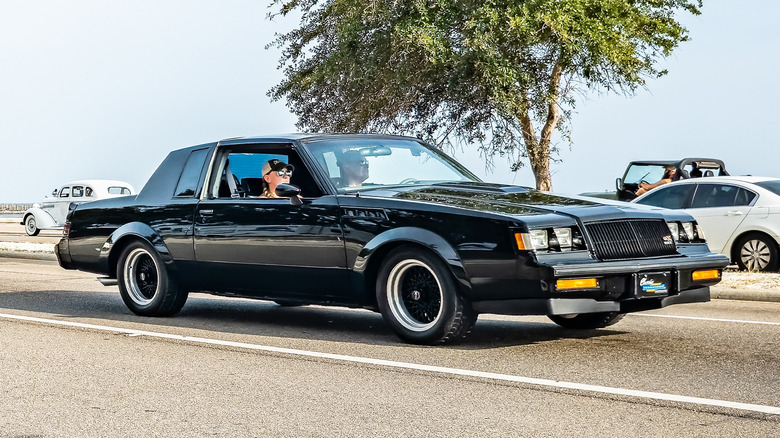10 Cars That Are More Valuable Used Than When They Were New
It's common knowledge that, after a car is purchased from a dealership, it will lose some of its value. It will then continue to lose value as it's driven and it ages, with some new cars shedding up to two-thirds of their value after just five years on the road. Except, this isn't always true. There are a few cars that defy tradition and end up rising in value with collectors long after they've left the dealership. In some cases, these cars might take decades to reach the point where they're worth more used than they were new, but in rare cases, they're worth more almost as soon as they're delivered to their first owners.
These value-gaining cars hail from a wide variety of manufacturers, from exotic marques like Ferrari and McLaren to domestic brands like Chevrolet and Buick. They are, of course, extremely unusual, but these 10 examples are all more valuable today than they were at launch.
To calculate which cars have risen in value over the decades, we've calculated the equivalent retail prices of each car in today's money using the Bureau of Labor Statistics' inflation calculator. Then, we've used data from Hagerty's valuation tool to provide an approximate current used value for each car, assuming it's in good condition.
Ferrari LaFerrari
In many cases, it takes decades from when a car is first unveiled for its resale value to eclipse its original asking price. However, the LaFerrari was destined to rise in value from day one. For starters, its name literally means "the Ferrari." Considering all the other iconic models the Prancing Horse has in its back catalog, that's a serious statement to make. It was a milestone technologically too, being the brand's first hybrid car and, at that point, the most powerful car it had ever unveiled.
The LaFerrari retailed at launch in 2013 for $1.42 million, which equates to around $1.915 million in today's money. However, its highly limited production run — just 499 examples were built — and its milestone status meant that resale values began to rise as soon as the first ones were delivered. The most expensive LaFerrari ever sold went under the hammer for $7 million, according to Glenmarch data, and was a charity auction organized by Ferrari to raise funds after an earthquake caused significant damage in central Italy. Today, Hagerty puts the value of a LaFerrari in good condition at $3.3 million, still far above its original retail price.
Plymouth Hemi Cuda Convertible
One of the rarest and most desirable muscle cars on the planet, the Plymouth Hemi Cuda Convertible arrived for the 1971 model year with a list price of $4,174. Adjusted for inflation, that's the equivalent of around $33,100 today. The convertible is significantly more valuable to collectors than the standard Hemi Cuda because it's extremely rare. Just 11 examples were built. However, that's pretty much the sole reason for their value since there was nothing mechanically special about the car compared to other '71 Plymouths.
That hasn't deterred collectors, who have continued to drive prices upward over the decades. Values for the car have fluctuated considerably over the years, with Hemmings reporting that valuations peaked at around $3 million in the mid-'00s. The recession saw Hemi Cuda Convertible prices fall rapidly, but they've since regained much of their value. As of this writing, Hagerty estimates an example in good condition to be worth $2.55 million.
McLaren F1
The McLaren F1 birthed the hypercar segment, being a world away from its peers in both performance and price. It cost $815,000 in 1994, an unprecedented sum at the time. Adjusted for inflation, that's around $1.76 million today. Its race-derived BMW V12 engine combined with its cutting-edge weight reduction meant that it was faster than anything else on the road, and it set a production car world speed record in 1998, topping 240 mph. Even today, it remains the fastest naturally aspirated production car ever.
Of course, every enthusiast worth their salt will already be well aware of its groundbreaking heroics. That's probably why the car remains so valuable among the most well-heeled of those enthusiasts, with Hagerty placing the car's current value at $20.5 million. That might seem high, but it reflects the car's completely unique status.
The chance of any other car revolutionizing the cutting edge of performance in such a decisive way as the F1 did is virtually nil. In an interview with Top Gear, Christian von Koenigsegg claimed that the main limitations on new speed records were tire technology and the fact that there simply isn't a long enough road to safely test cars much faster than current records. The idea of some F1-esque car coming along and shattering everyone's perceptions of what a car can do simply can't happen again, which virtually guarantees that the F1 will continue to remain a grail for collectors long into the future.
Ford GT
To say that the Blue Oval gave itself a difficult task in resurrecting the GT40 is an understatement. To this day, original examples of the GT40 remain the most valuable Fords ever sold by a considerable margin, their historical Le Mans victories etching them permanently into motorsport history. Whether Ford truly lived up to the legend with the release of the 2005-06 GT is a controversial question, but clearly enough wealthy collectors think it's a worthy successor. Back at its launch in 2005, the GT retailed for $139,995, around $232,000 in today's money.
Over 4,000 examples of the car were produced, making it significantly more common than most other cars here. Nonetheless, Hagerty's current valuation of $353,000 means that long-term Ford GT owners will be looking at a healthy profit margin if they decide to part ways with their car.
Ford has managed to pull the same trick twice with the latest generation of the GT, which debuted for the 2017 model year. It was much costlier than the '05 GT, with a starting price of $453,750 (around $590,000 in today's money), but it has again risen in value since its release. Hagerty estimates the value of a 2017 example in good condition to be $804,000.
Mercedes-Benz 300 SL Gullwing
Considering it almost never got built, the Mercedes-Benz 300 SL Gullwing was a remarkable success for its maker. The car was originally developed for competition purposes only and proved to be a successful racer. It caught the eye of Max Hoffman, an American Mercedes-Benz importer, who was convinced that a road-going version of the car would be the ideal thing to entice wealthy American customers. He was so convinced that he took the idea to the automaker's board, whose members initially weren't too keen. Hoffman made a shocking offer: He would buy 1,000 examples, giving Mercedes-Benz a sizable minimum production guarantee.
It was enough to convince bosses to greenlight the car, and in 1954, the first examples of the production Gullwing would be unveiled to the public. By 1956, the car's starting price clocked in at $7,463, the equivalent of around $87,900 today. Hoffman proved to be exactly right in his predictions, and he had no trouble shifting all 1,000 units of his initial order. In the end, production would be extended to 1,400 units.
The mystique of the car with its unique, timeless design and racing pedigree has kept it a grail among collectors, and today, Hagerty estimates that a well-kept example is worth $1.4 million. However, the rarest 300 SL variants are worth far, far more. In 2022, an RM Sotheby's auction saw the ultra-rare Mercedes-Benz 300 SLR Uhlenhaut Coupe fetch $143 million, making it the most expensive car ever sold.
Lamborghini Miura
It wasn't Lamborghini's first car, but the Miura was the first model that really threw the Raging Bull into the global spotlight. It was crowned the fastest production car in the world and boasted the neck-snapping looks to back up its neck-snapping performance. The first example reached customers in 1966, and it didn't take long for the Miura to become a globally recognized icon, its success helping shape other supercars in the process.
Originally, American buyers could purchase one for $19,250. Adjusted for inflation, that's the equivalent of $185,000 today — still far less than the price of a new Temerario. The Miura attracted many elite buyers, including Hollywood stars and singers, further reinforcing its appeal. Many of those famous faces are no longer in possession of their Miuras, but if they are, they'll find themselves with a very healthy return on their investment. A current Hagerty value of $1.65 million makes the Miura one of the most valuable Lamborghinis on the planet, although it's not quite as valuable as the ultra-rare Veneno Roadster.
Chevrolet Corvette L88
Collectors are often willing to pay a premium for the rarest variants of a popular car, and the Chevrolet Corvette L88 is an extreme case of that. In 1967, an L88-equipped Corvette cost over $5,300 (around $51,200 today) according to CorvSport, while a base example cost around $1,000 less. The L88 engine was the most powerful mill that Chevy could put into production and was designed as a way to ensure that race-ready Corvettes were still available to buy despite GM officially implementing a race ban.
The '67 model year is the rarest, with only 20 examples sold, thanks to the package's steep price and the requirement to run the car on 103-octane fuel. It was too inconvenient and too pricey for most Corvette buyers to consider, and those who did buy one knew exactly what the deal was. They also knew that the L88's official output of 430 horsepower was hugely conservative, and that the real output was more like 550 horsepower.
The '67 Corvette isn't the only model year to be available with the L88 option, but since it's so rare, it's the most expensive. According to Hagerty, the current resale value for one is $1.5 million, but one particularly pristine example sold for a record $3.85 million back in 2014.
Porsche 356A Speedster
The Porsche 356 is one of the most commonly replicated enthusiast cars on the market — in fact, entire companies exist with the primary purpose of building 356 replicas. Evidently, the demand to own one vastly outweighs the supply of authentic examples, and that has helped keep resale prices for the car at eye-watering levels for many years now.
The 356 was available in several forms over the years it was on sale, but here we're spotlighting the 1957 356A Speedster. When new, it cost around $3,000, or around $34,300 in today's money. Survivors now go for six- or seven-figure sums depending on their history and condition, with Hagerty estimating the value of a Porsche 356A 1500 GS Carrera Speedster to be $1.2 million. Other examples sell for far less, with the pictured 356A Speedster valued at a 2024 Bonhams auction at $285,000 to $330,000. That's still a huge increase in value over the original, though, and enough to put the 356A far out of the reach of most enthusiasts.
Aston Martin DB5 Convertible
Immortalized as James Bond's car in the blockbuster movie series, the Aston Martin DB5 is one of the most recognizable British cars of its era. All variants of the DB5 remain in high demand among collectors, but the DB5 Convertible is particularly valuable. It retailed for £4,490 back in 1965, roughly $12,572 at the time. Adjusting that dollar figure for inflation results in an equivalent of $127,200 in today's money.
That's no small amount, but it's a bargain compared to the $1.4 million valuation that Hagerty pins current surviving examples of the DB5 Vantage Convertible at. Then again, that price is to be expected — a mere seven examples of the top-spec Vantage drop-top were made, out of a total run of 123 DB5 convertibles.
The DB5 sported similar looks to its predecessor, the DB4, but its engine was notably upgraded. That helped make it significantly faster than the DB4 and give it the grunt needed to be 007's ride. Arguably, it's the car's movie presence that is the biggest driver of its value, and as long as well-heeled film fans continue to feel like they're James Bond while they're driving one, that won't change anytime soon.
Buick GNX
Although its rise in value isn't quite as dramatic as some of the other cars here, the Buick Regal GNX is still worth more to collectors today than it cost to buy new. Back in 1987, the car retailed for $29,200, around $82,900 in today's money. According to Hagerty, an example in good condition is today valued at $110,000. Unlike many highly desirable muscle cars, the GNX featured a V6 under the hood rather than a V8. Its 276-horsepower output represented a notable step up over the standard Grand National, and it could accelerate faster than the standard car too, with a reported 0-60 mph time of around 5.5 seconds.
Perhaps GNX prices might have been even higher today, if too many collectors hadn't seen their potential to rise in value too early on. Ironically, in keeping the GNXs in perfect condition for many decades, these collectors helped keep values from skyrocketing — there were simply too many low-mileage examples for buyers to choose from. Prices haven't risen much over the course of the past decade, and despite some recent unexpected publicity from rapper Kendrick Lamar, it seems unlikely that the GNX will skyrocket in value for the foreseeable future.
